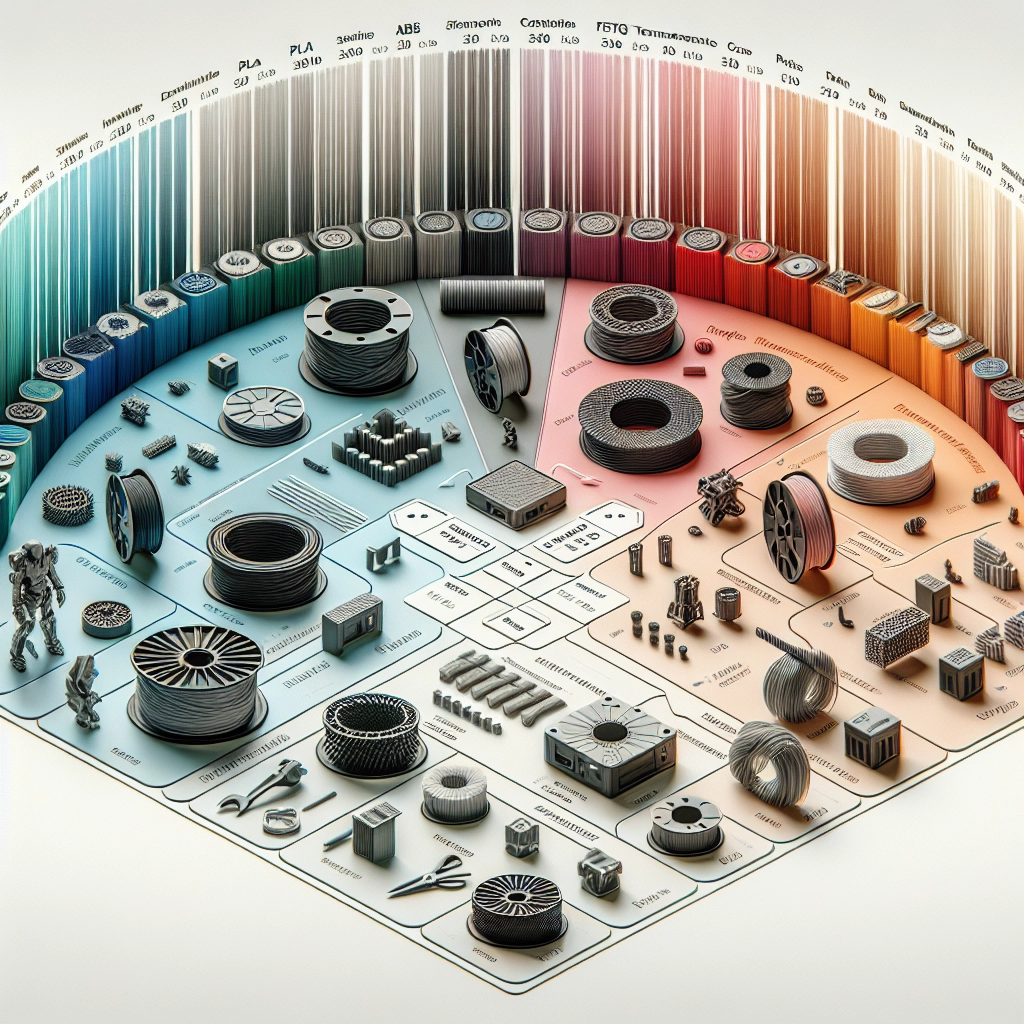Choosing the Right 3D Filament for Your Project
Ah, the wonderful world of 3D printing! If you’re diving into this creative realm, you might have marveled at printing objects layer by layer, transforming digital ideas into tangible objects. But before you get swept away by the thrill of watching that filament dance, it’s essential to know how to choose the right 3D filament for your project. With a vast array of filament types available, understanding their properties and applications is the key to a successful print.
Understanding Common Filaments
First, let’s talk about the most common types of 3D filament you’ll encounter:
1. PLA (Polylactic Acid)
PLA is the poster child of 3D printing. It’s biodegradable, making it an eco-friendly choice if you’re looking to reduce your carbon footprint. PLA is straightforward to print, adheres well to the print bed, and comes in a variety of colors and finishes. Its low melting temperature means less warping, which is fantastic for beginners. However, while it looks great for display pieces and prototypes, it may not hold up well under heat and stress. So, if your project demands durability or heat resistance, you might want to consider other options.
2. ABS (Acrylonitrile Butadiene Styrene)
ABS is like PLA’s tougher sibling. Known for its strength and durability, it’s commonly used in professional engineering and functional prototypes. ABS can withstand higher temperatures without deforming, which makes it suitable for parts that will see more wear and tear, like tools or mechanical components. However, it can be a little trickier to print. It requires a heated bed and proper ventilation since it can emit fumes during the printing process. If you’re ready to tackle these challenges, ABS can be a fantastic choice.
3. PETG (Polyethylene Terephthalate Glycol)
If you’re looking for a hybrid between the ease of PLA and the durability of ABS, welcome to PETG. This filament offers a unique blend of strength and flexibility, making it resistant to impact and chemical exposure. It’s an excellent choice for parts that need to handle some tough conditions without breaking. Plus, it’s food-safe—perfect for creating utensils or containers if you’re inclined to make kitchen gadgets. PETG doesn’t warp nearly as much as ABS, which contributes to an easier print experience.
4. TPU (Thermoplastic Polyurethane)
Feeling adventurous? TPU is a flexible filament that’s great for creating soft, pliable objects like phone cases, gaskets, or even toys. Its elasticity is impressive, supporting a wide range of applications. Just keep in mind that printing with TPU requires adjusting your printer settings and potentially a modified extruder to handle its flexibility. If you’re itching to try out a new texture in your prints, this is where you should dive in.
Factors to Consider
So, how do you choose the right filament for your project? Here are some factors to consider:
-
Purpose: What are you creating? If it’s just for aesthetics or a quick prototype, PLA might work best. For functional parts, consider ABS or PETG.
-
Environmental Conditions: Will your 3D print be exposed to heat or moisture? For heat resistance, lean towards ABS or PETG.
-
Ease of Use: Are you a beginner? PLA is usually the most forgiving filament for newcomers. It’s widely available and works easily with most 3D printers.
-
Finish: Some projects may call for a specific finish. Filaments differ in texture and sheen. Consider how the final object should look and feel.
-
Post-Processing: If you plan on sanding or painting your prints, check how well the material responds to these processes. ABS can be smoothed with acetone, while PLA may resist paint.
Experiment and Have Fun!
At the end of the day, don’t be afraid to experiment with different filaments. Each material offers its own unique characteristics and challenges, but that’s part of the fun of 3D printing! You’ll learn by doing and discover which filaments resonate with your projects and preferences.
Remember: the right filament can make all the difference in the success of your printing endeavor. So, grab that filament, push the print button, and enjoy the journey of bringing your ideas to life! Whether you are crafting a miniature model or designing a functional tool, the right choice can unleash your creativity in ways you haven’t imagined. Happy printing!

